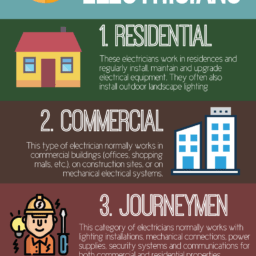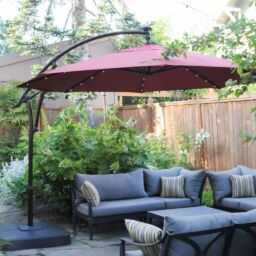Preparation and setting up
When setting up a flip over saw it is important that you choose a suitable site to work from that is flat, level and free from loose materials, debris or rubble. Check that the flip over saw is firm and does not move.
Your power supply should be from a safe point with enough capacity for the start up surge of a powerful motor, often around 2000w. This supply should have some kind of circuit protection preferably a sensitive breaker that will trip in the even of an accident. If using a 110v transformer, site this next to the power point and use a suitable 110v extension lead to the flip over saw. DO NOT run a 240v extension lead to the 110v transformer at the saw!
Sensibly route the power cable to the flip over saw away from the work area and not suspended off the ground in any way to cause a trip hazard.
Gather together your personal protection equipment (PPE), which should at least comprise of suitable safety glasses and a good push stick if using the flip over saw in table cutting mode. Ear defenders are a good idea if in an enclosed space or if using the saw for extended periods and absolutely essential if cutting aluminium (special blade required) (as the noise from these blades can be horrendous!) If not using a dust extraction system then dust nuisance face masks should also be considered especially if ripping down long lengths of material or working in an enclosed space.
As always wear stout, steel toe capped boots, sensible clothes and tuck away anything loose that could be pulled into the blade. Wearing rings and other jewellery is not to be recommended either. Hard hats are needed if there is a danger from above or if passing long lengths of timber overhead.
Your material stock should be sited to hand and safely stacked, removing a single length should not cause the stack to collapse!
This writer likes to site the saw so that I don’t have to walk around it to take the freshly cut workpiece back to the work place and then stack the materials to the left hand side for convenience. This leaves a clear route between the flip over saw and the workplace. Being efficient means getting more work done for less effort!
If cutting lengths longer than say 1 meter, some kind of side supports are going to be necessary. Either commercial saw supports or custom altered ‘saw horses’. This writer uses metal folding type, saw horses with a timber packing piece screwed to the tops; making them the exact same height as the mitre saw ‘bed’. Three is ideal, two to the left and one to the right to catch the off cut. Two to the left is needed as the material may get smaller and smaller if cutting several sections out of one length. This is essential for safe working and to prevent the blade snatching the workpiece as it cuts through.
Plan your work so that you minimise the amount of times that you need to ‘flip’ the saw over into table mode and back, if you can. For example; do all of the table saw cuts first and then switch to your mitre saw cuts. This is not always feasible or practical though and fortunately most flip over saws are quick to change over.
Working with a flip over saw
If you have set up as described above you are readily and will work efficiently and more importantly safely!
Mitre saw cuts
Material should be placed gently on the flip over saw and slid to the area to be marked and cut. Dropping heavy material on to the saw bed will eventually ruin the flip over saws accuracy settings and may even damage the saw.
Long lengths should be marked from the left and short lengths of say under a meter should be marked from the right. This is to ensure that the longer side of the material to be cut is to the left as this is the side which you will be firmly holding as the saw does its work.
Place the material under the blade and grasp the handle with blade guard release DO NOT PRESS THE POWER SWITCH AT THIS POINT.
Gently pull down the saw until the blade almost touches the material and adjust the material side to side, until the blade is positioned to the waste/off cut side of your mark.
Release the saw back to its resting point and keeping a firm grip on the workpiece, start the motor.
While waiting for the blade to reach full speed, listen to it. Become familiar with how the motor sounds and be vigilant to anything unusual. Sometimes small pieces of material get trapped in the guard mechanism and can rub against the blade until they fly out without warning! Stop, unplug the power and investigate any unusual sounds immediately!
With the blade at full speed and sounding good, gently pull the saw down into and through the workpiece. Become familiar with how the blade feels and cuts, learn to judge how much pressure to apply and do not slow the blade down excessively, about 10% or so is about right. Once all the way through the material, gently return the saw to its upright position, switch off the motor and wait for the blade to completely stop.
All done, you should now have the correct size workpiece. Ready for transferring to the workplace for fixing.
Never leave a flip over saw running in-between cuts. On a busy site a running motor can be dangerously and deceptively quiet.
Table saw cuts
Fold down the saw ‘head’ and secure as directed in the manufacturers instructions (they vary a little), ‘flip’ the saw over and listen for the locator catch to click. Always ‘double check’ visually that the saw bed is secured in position.
Always use the riving knife and blade guard when ripping down timber, again, as per manufacturers description. This stops the timber binding the blade after the cut and prevents the blade ‘throwing’ the timber back towards you at some speed!
Set up the fence or guide if making a parallel cut using the graduated marks on the saw table bed or by measuring between the fence and blade with a tape measure.
If you have set up the saw as per the earlier instructions you should have a clear area in front of the flip over saw (it is so tempting to stack material behind you, but as you can see, this is a mistake).
Once you are ready, start the flip over saw and step back from the machine with your material in hand. Again, listen to the motor as the blade spins up to full speed and place your material on the front edge of the table and line it up with the fence.
By now the blade will be running at full speed, gently but firmly feed the material into the blade, keeping a firm sideways and downwards pressure on the material into the guiding fence and table bed. Once you are about half way you have the option to stop, withdraw the material, turn it over end to end and run the other half through until you meet the first cut. Shorter lengths may be fed straight through in one go, keeping hands well away from the blade or use one or two push sticks.
Personally, this writer does not like to get any closer to a running blade than about 100mm or 4″; sure I know many that run much closer than this, but hey, I like all of my fingers!
Off cut management
Always know where your off cut is going to go. Small ones can fly out if not properly managed and long off cuts can tip and trap the blade also causing trouble. Good support is the answer, BEFORE, DURING and AFTER the cut.
Limitations
Assuming that you have the right size saw for the job in hand and it can physically cut the material. The only limitation that you will find with a flip over saw is that of having to continually flip the machine between the two modes if the work demands it or you don’t properly plan your cuts. Flip over saws do mean that you need to look a little further ahead and think about what you are doing.
As with many combination machines there is some compromise to achieve the flexibility. With flip over saws this may mean that the table saw bed is a little small or that the capacity of the mitre saw is a little less because it doesn’t have a sliding arm.
Ultimately though, using a flip over saw is simple coupled with good capabilities and versatility means that a flip over saw can handle most jobs, either on site or in the workshop at home.
Additional reading
Amazon stock several hundred books on this subject; search for power saws, table saws or mitre saws for best results.
Reviews can be found on most tool supply sites these days.
Conclusions
Choose a suitable and safe site to set up the flip over saw, ideally away from other workers.
Ensure that the flip over saw is on a firm base and does not move.
Use a safe protected, power supply and sensible cable routing.*
Ensure your ‘push stick’ and personal protection equipment (PPE) are to hand.
Arrange materials close to hand and safely stacked to your left (when facing the saw).
Ensure your route from the flip over saw to the workplace is logical, clear and safe.
Plan your work, dividing jobs into mitre saw and table saw modes.
Use side supports if material is over a meter long.
Mark material from the left unless the cut is under a meter, then mark from the right.
Firmly hold workpiece and don’t allow the blade to touch the material until up to full speed.
Never leave the saw running in between cuts.
Always use the riving knife and blade guard when ripping down material.
Keep your hand/fingers at least 100mm plus away from a running blade.
Clean off sawdust and pack away carefully for next time.
Carefully wipe the blade with a light oil if not using the saw again for several weeks.
Keep the saw storage area locked and the saw under an old sheet or blanket.
Warnings
Your protected power supply should be from a safe point with enough capacity for the start up surge of a powerful motor, often around 2000w.
If using a 110v transformer, site this next to the power point and use a suitable 110v extension lead to the flip over saw. DO NOT run a 240v extension lead to the 110v transformer at the saw!
Sensibly route the power cable to the flip over saw away from the work area and not suspended off the ground in any way to cause a trip hazard.
Gather together your personal protection equipment (PPE), which should at least comprise of suitable safety glasses and a good push stick if using the flip over saw in table cutting mode.
Ear defenders are a good idea if in an enclosed space or if using the saw for extended periods and absolutely essential if cutting aluminium (special blade required; as the noise from these blades can be horrendous!)
Consider Dust nuisance face masks if not using an extraction system.
As always wear stout, steel toe capped boots, sensible clothes and tuck away anything loose that could be pulled into the blade.
Wearing rings and other jewellery is not to be recommended either.
Hard hats are also needed if there is a danger from above or if passing long lengths of timber overhead.
AUTOPOST by BEDEWY VISIT GAHZLY





